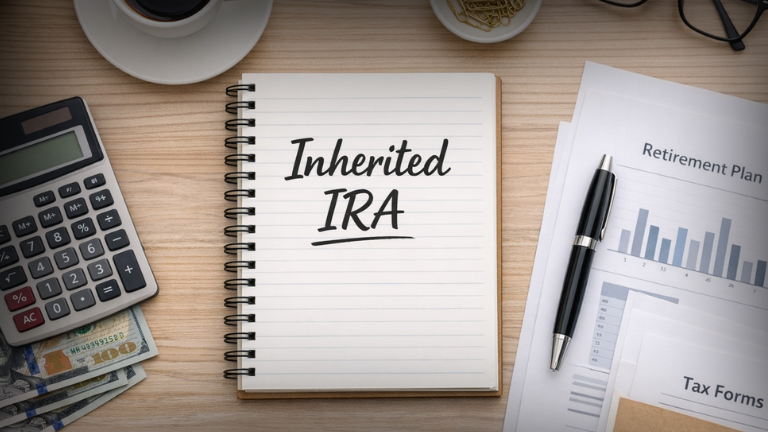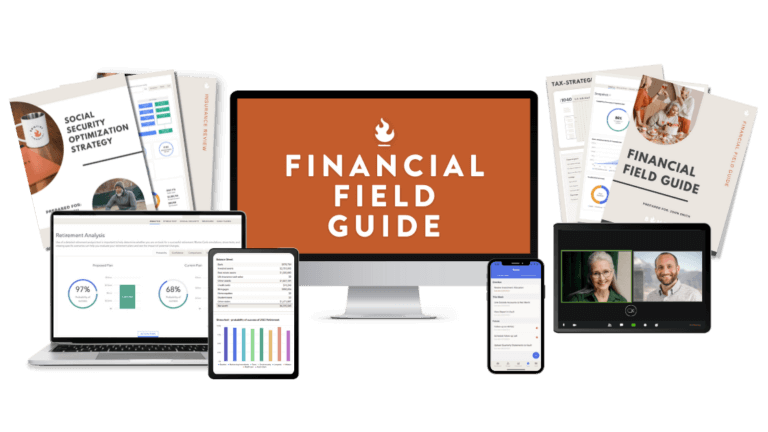Retirement planning mistakes are often not about splurging on big vacations or buying luxury cars. The real danger usually lies in the hidden costs in retirement that slowly drain savings. Many retirees believe they have accounted for everything, yet some of the most common overlooked expenses, like healthcare, housing upkeep, and inflation, can quietly derail even the most carefully built plan.
The good news is that these mistakes can be avoided. By understanding where retirees most often miscalculate, and by recognizing the hidden costs in retirement, you can design a plan that is more resilient and less vulnerable to surprises. Today, we will break down the most common overlooked expenses in retirement, why they matter, and how to plan for them. If you want your retirement plan to last as long as you do, this is the guide you cannot afford to miss.
Listen Now: iTunes | Spotify | iHeartRadio | Amazon Music
Why Retirement Planning Mistakes Are So Common
When you are still working, surprise expenses are easier to manage. A paycheck is coming in, and you can save more or adjust spending temporarily. In retirement, income is typically fixed. You rely on Social Security, pensions, and investment withdrawals. That means every unexpected bil, whether it is a new roof, a healthcare emergency, or long-term care, directly reduces your nest egg.
One of the biggest retirement planning mistakes is treating your budget as if it will never change. In reality, costs fluctuate, and inflation guarantees that what seems sufficient today may not be enough ten years from now. Building flexibility into your plan is the best way to avoid the hidden costs in retirement from catching you off guard.
Retirement Planning Mistake #1: Underestimating Healthcare Costs
Healthcare is the most underestimated expense in retirement. Many assume Medicare will cover nearly everything, but that is a costly mistake. Retirees still face monthly Medicare premiums, supplemental insurance costs, copays, and deductibles. On top of that, Medicare does not cover dental, vision, or hearing aids, three areas that become more important with age.
Ignoring long-term care is another common mistake. Assisted living, memory care, or in-home nursing support can cost thousands of dollars per month. Couples are especially vulnerable because one spouse’s healthcare needs can quickly deplete assets and leave the other with fewer resources. Planning for these hidden costs in retirement is critical, whether through savings, long-term care insurance, or a hybrid policy.
The Solution:
-
Budget realistically for Medicare premiums, Medigap or Advantage plans, and out-of-pocket expenses.
-
Create a separate “healthcare fund” within your retirement accounts dedicated to medical costs.
-
Explore long-term care insurance or hybrid life policies with LTC riders to protect against catastrophic expenses.
-
Consider Health Savings Accounts (HSAs) while still working, since funds can grow tax-free and be used for qualified medical expenses in retirement.
Retirement Planning Mistake #2: Forgetting About Cars
Many retirees assume that because their car is paid off, it will not be a concern. But retirement can last 20 to 30 years, and vehicles do not last that long. Repairs, insurance, and eventual replacements are inevitable. This is a retirement planning mistake that sneaks up on many households. Including a vehicle replacement fund in your budget ensures that transportation needs do not become one of the hidden costs in retirement that strain your finances.
The Solution:
-
Build vehicle replacement into your retirement plan. For example, expect to purchase a new or used car every 8–12 years.
-
Set aside a specific sinking fund for future vehicle expenses so you are not forced to withdraw large sums unexpectedly.
-
Shop insurance regularly to keep premiums in check, and consider usage-based policies if you drive less in retirement.
Retirement Planning Mistake #3: Treating Housing as “Set and Forget”
Owning your home outright provides stability, but it does not eliminate housing costs. Property taxes, insurance, and regular maintenance remain significant. Roofs, furnaces, and appliances will eventually need replacement. Another hidden cost in retirement is the myth of downsizing. Many believe they can sell a large home, buy a smaller one, and pocket the difference. In reality, retirees often move into smaller but newer or better-located homes, meaning little to no extra equity is gained. The mistake is assuming housing will be a source of retirement income, when in fact it often just shifts your expenses.
The Solution:
-
Plan for 1–3% of your home’s value per year for maintenance and repairs.
-
Consider a home equity line of credit (HELOC) as a backup source for unexpected repairs, while being cautious about overuse.
-
If downsizing, be realistic: research comparable neighborhoods and understand that “smaller” often does not mean “cheaper.”
Retirement Planning Mistake #4: Ignoring Inflation
Inflation quietly erodes buying power. A $10,000 monthly budget today may require $13,500 in ten years at a 3% inflation rate. At 5%, that same budget could reach $16,000. Many retirement plans fail to fully account for inflation, creating future shortfalls. The hidden cost in retirement here is not just rising prices, but the compounding effect year after year. A realistic plan assumes higher future expenses and avoids the mistake of assuming costs will remain stable.
The Solution:
-
Use conservative inflation estimates (3–4%) in your retirement projections instead of assuming historical lows.
-
Keep a portion of your portfolio invested in growth assets (such as equities) to outpace inflation over the long term.
-
Revisit and update your retirement plan regularly to adjust for real-world inflation trends.
Retirement Planning Mistake #5: Overlooking Lifestyle Spending
Spending patterns in retirement are rarely flat. Holidays, family visits, vacations, and hobbies create spikes in expenses. A mistake many retirees make is expecting their spending to remain consistent. In reality, expenses ebb and flow, and these fluctuations are one of the hidden costs in retirement that can quickly eat into savings if not anticipated. A flexible withdrawal strategy that accounts for seasonal highs and lows is essential.
The Solution:
-
Build flexibility into your withdrawal strategy, allowing for “seasonal spikes” in spending.
-
Use a bucket strategy: short-term needs in cash, mid-term in bonds, and long-term growth in equities.
-
Track spending during the first year of retirement to get a realistic picture of your lifestyle costs.
-
Set aside a discretionary “fun fund” for travel, hobbies, or gifts so these expenses do not disrupt your core retirement budget.
The Importance of Stress-Testing Your Retirement Plan
Perhaps the most overlooked retirement planning mistake is not stress-testing your plan against worst-case scenarios. What happens if inflation surges? What if healthcare costs reach five figures per month? What if your home requires major repairs and a new car at the same time? Running these scenarios may be uncomfortable, but it reveals the true resilience of your retirement plan. If your plan can handle the hidden costs in retirement, you are far more likely to enjoy peace of mind.
Avoiding Retirement Planning Mistakes: Key Takeaways
-
Do not underestimate healthcare and long-term care expenses.
-
Expect to replace cars, even if yours is paid off now.
-
Recognize that housing requires ongoing costs and downsizing rarely frees up much cash.
-
Always factor in inflation, even when it feels low.
-
Account for seasonal lifestyle spending, not just averages.
-
Stress-test your plan to identify weak spots before they become real problems.
Final Thoughts
The biggest retirement planning mistake is assuming life will go exactly as expected. The reality is that hidden costs in retirement are inevitable, whether from healthcare, housing, inflation, or lifestyle shifts. By identifying these risks early and building flexibility into your plan, you can avoid surprises and protect your hard-earned savings. Retirement should be about freedom, not financial stress. With the right preparation, you can enjoy the lifestyle you worked for while staying confident that your money will last as long as you do.
Next Steps
You do not have to plan for retirement alone. Our team can help you uncover the hidden costs in retirement, stress-test your plan, and create a strategy that gives you confidence about the future. Schedule a call with us today to talk through your goals and see how we can help you build a retirement plan that lasts.
 Client Login
Client Login







